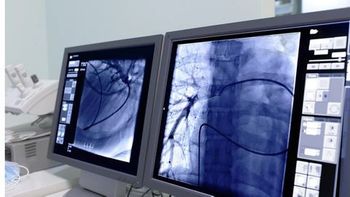
Taking steps to improve pediatric imaging, comforting patients and securing high-quality scans, is critical now and for the post-pandemic era.

Taking steps to improve pediatric imaging, comforting patients and securing high-quality scans, is critical now and for the post-pandemic era.

The importance of listening.

Sometimes taking a step back can help you find the path to keep moving forward.

Credentialing leads to higher-quality, more consistent care while improving patient trust.

Artificial intelligence topped the list of five major themes at RSNA 2020, highlighting all the developments from vendors this year.

What if you report things that aren’t on the scan you’re given?

Sometimes autopilot can be the protector of critical thinking and decision making.

Working at one facility or practice for your entire career is no longer the norm. Knowing how to recognize when – and why – to make a move can be beneficial.

Getting you through the end-of-year doldrums and work pressures.

Best practices to get you started.

Giving a reason for your requests can lead to greater compliance and better outcomes, especially in the workplace.

Anastasia Hryhorczuk, M.D., assistant clinical professor of radiology at Michigan Medicine, discusses, during RSNA 2020, the challenges that face radiology with sexual harassment and some strategies to eliminate it.

When support staff step in to control communications and keep the workday running smoothly.

An agreement or a promise does not mean much if it is not clear how you can or will reach the goal.

Venting into the ether when you are "frustravated" can be cathartic.

Teleradiology presents both benefits and challenges for post-pandemic imaging.

What options do you have when presented with cases that cannot be read “as-is?”

Knowing the reasons behind your decisions – especially ones that affect patients – can be as important as the decision itself.

Interventional radiologists are uniquely positioned to practice stroke intervention.

When a self-imposed expectation of productivity is a driving force.

Re-authorize MDUFA without raising user fees to fund unrelated programs.

Screening mammography begins to reduce breast cancer mortality at an age earlier than when most women begin screening.

How many lives have you changed, one scan at a time?

Delays in the diagnosis and treatment of breast cancer have led to the creation of multidisciplinary recommendations for breast cancer care during the COVID-19 pandemic.

Collaborative Imaging’s Dhruv Chopra, MBA, takes a deeper look into how many follow-up recommendations are ignored and what can be done to reverse the trend, leading to better patient care.

Penn Medicine is dedicated to improving artificial intelligence to address radiology needs in individual institutions worldwide, both improving performance and patient outcomes.

Taking time to ask questions – instead of announcing mandates – can be far more effective.

It is time for facilities to push for greater interoperability and unified systems.

Double-check behind those follow-up orders – is now the time, is it the right study, are prior studies needed?

Invest wisely in a strong foundation to ensure continued innovation.